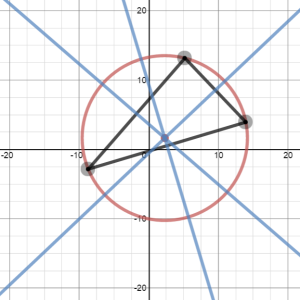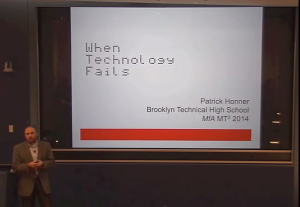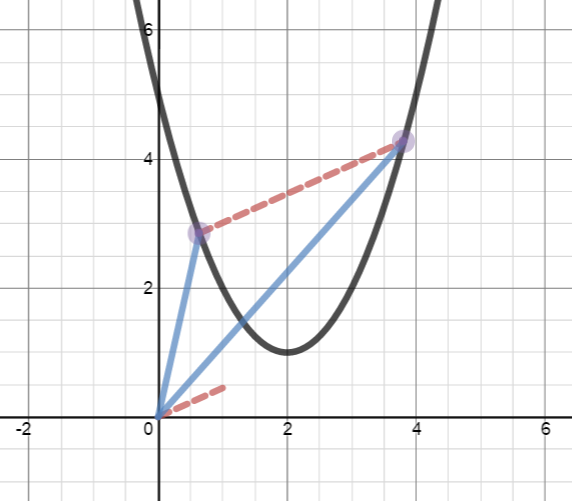 I’m presenting on Desmos at today’s AMAPS meeting in New York City, and preparing my talk was an object lesson in how wonderful this technology is.
I’m presenting on Desmos at today’s AMAPS meeting in New York City, and preparing my talk was an object lesson in how wonderful this technology is.
Part of my presentation demonstrates simple ways that Desmos can be a part of every high school math class: Algebra, Geometry, Trigonometry, Pre-Calculus, and Calculus. While Geogebra is generally more suitable for demonstrating and exploring geometry, Desmos certainly can be useful in that course, so I wanted to show something relevant and interesting as part of my talk. I thought, “Why not compute the circumcircle for an arbitrary triangle?”
While all the pieces of the mathematical puzzle were there for me, figuring out how to put them together in Desmos was a fun, frustrating, and worthwhile challenge. I had to play around with the basic concepts associated with perpendicular bisectors and think creatively about some mathematical problems and equations. I even ended up using the new regression feature in Desmos in a clever way!
I often get caught up in little challenges like this, and this is why Desmos is so wonderful: it provides us a mathematical makerspace. It invites us to play around, to create, to engineer, to build. And all of this happens through using the language and concepts of mathematics.
You can see my circumcircle demonstration here, and you can find more of my work in Desmos here.




